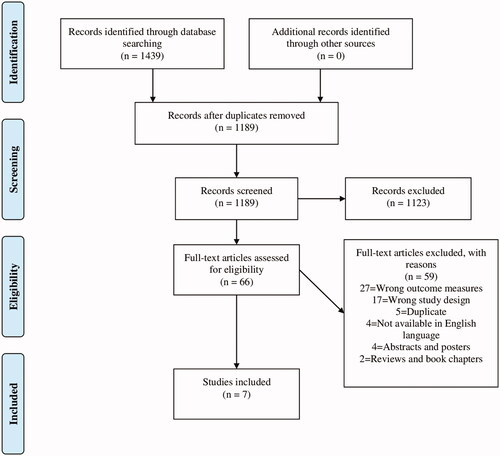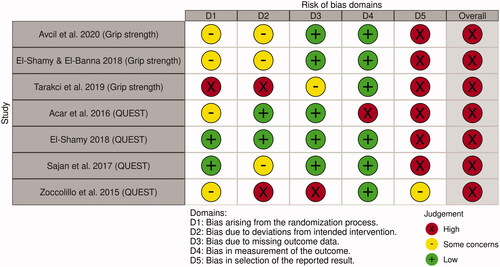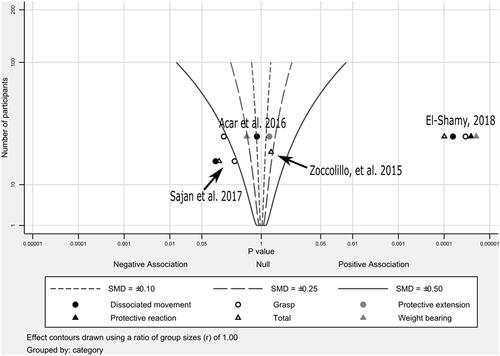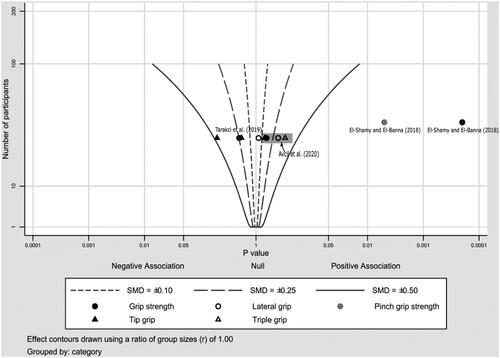Figures & data
Figure 1. PRISMA flowchart for the selection process.

Table 1. Characteristics of the included studies.
Figure 2. Risk of bias assessment.

Figure 3. Albatross plot of QUEST.

Figure 4. Albatross plot of Grip strength.

Table 2. Certainty of the evidence (GRADE).
